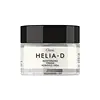What's inside
What's inside
 Key Ingredients
Key Ingredients

 Benefits
Benefits

 Concerns
Concerns

 Ingredients Side-by-side
Ingredients Side-by-side

Water
Skin ConditioningGlycerin
HumectantRicinus Communis Seed Oil
MaskingCetyl Alcohol
EmollientStearic Acid
CleansingUrea
BufferingButyrospermum Parkii Butter
Skin ConditioningPhenoxyethanol
PreservativeHelianthus Annuus Seed Oil
EmollientHydrogenated Castor Oil
EmollientDiglycerin
HumectantSodium PCA
HumectantHelianthus Annuus Extract
EmollientSorbic Acid
PreservativeCarbomer
Emulsion StabilisingEthylhexylglycerin
Skin ConditioningParfum
MaskingSodium Hydroxide
BufferingTocopheryl Acetate
AntioxidantAllantoin
Skin ConditioningCopernicia Cerifera Wax
Hydrolyzed Wheat Protein
Skin ConditioningLactic Acid
BufferingLysine
Skin ConditioningPCA
HumectantSorbitol
HumectantCalendula Officinalis Flower Extract
MaskingHydroxycitronellal
PerfumingHexyl Cinnamal
PerfumingLimonene
PerfumingAlpha-Isomethyl Ionone
PerfumingGeraniol
PerfumingLinalool
PerfumingCitronellol
PerfumingCoumarin
PerfumingBHT
AntioxidantAscorbyl Palmitate
AntioxidantWater, Glycerin, Ricinus Communis Seed Oil, Cetyl Alcohol, Stearic Acid, Urea, Butyrospermum Parkii Butter, Phenoxyethanol, Helianthus Annuus Seed Oil, Hydrogenated Castor Oil, Diglycerin, Sodium PCA, Helianthus Annuus Extract, Sorbic Acid, Carbomer, Ethylhexylglycerin, Parfum, Sodium Hydroxide, Tocopheryl Acetate, Allantoin, Copernicia Cerifera Wax, Hydrolyzed Wheat Protein, Lactic Acid, Lysine, PCA, Sorbitol, Calendula Officinalis Flower Extract, Hydroxycitronellal, Hexyl Cinnamal, Limonene, Alpha-Isomethyl Ionone, Geraniol, Linalool, Citronellol, Coumarin, BHT, Ascorbyl Palmitate
Water
Skin ConditioningDimethicone
EmollientHydrogenated Polyisobutene
EmollientGlycerin
HumectantCholesterol
EmollientC12-15 Alkyl Benzoate
AntimicrobialCeramide NP
Skin ConditioningHelianthus Annuus Seed Oil Unsaponifiables
EmollientBis-PEG-18 Methyl Ether Dimethyl Silane
EmollientSodium Polyacrylate
AbsorbentPEG-10 Dimethicone
Skin ConditioningNylon-12
Lauryl PEG-9 Polydimethylsiloxyethyl Dimethicone
Skin ConditioningDimethicone/PEG-10/15 Crosspolymer
Phenoxyethanol
PreservativeDisteardimonium Hectorite
StabilisingHydroxyethylpiperazine Ethane Sulfonic Acid
BufferingAmmonium Polyacryloyldimethyl Taurate
Emulsion StabilisingChlorphenesin
AntimicrobialCaprylyl Glycol
EmollientPEG/PPG-18/18 Dimethicone
EmulsifyingPropylene Carbonate
SolventDisodium EDTA
Acrylonitrile/Methyl Methacrylate/Vinylidene Chloride Copolymer
Adenosine
Skin ConditioningDipropylene Glycol
HumectantLavandula Angustifolia Oil
MaskingRosmarinus Officinalis Leaf Oil
MaskingT-Butyl Alcohol
PerfumingMentha Piperita Oil
MaskingSodium Citrate
BufferingLinalool
PerfumingIsobutane
Ceramide EOP
Skin ConditioningBHT
AntioxidantTocopherol
AntioxidantLimonene
PerfumingCeramide AP
Skin ConditioningWater, Dimethicone, Hydrogenated Polyisobutene, Glycerin, Cholesterol, C12-15 Alkyl Benzoate, Ceramide NP, Helianthus Annuus Seed Oil Unsaponifiables, Bis-PEG-18 Methyl Ether Dimethyl Silane, Sodium Polyacrylate, PEG-10 Dimethicone, Nylon-12, Lauryl PEG-9 Polydimethylsiloxyethyl Dimethicone, Dimethicone/PEG-10/15 Crosspolymer, Phenoxyethanol, Disteardimonium Hectorite, Hydroxyethylpiperazine Ethane Sulfonic Acid, Ammonium Polyacryloyldimethyl Taurate, Chlorphenesin, Caprylyl Glycol, PEG/PPG-18/18 Dimethicone, Propylene Carbonate, Disodium EDTA, Acrylonitrile/Methyl Methacrylate/Vinylidene Chloride Copolymer, Adenosine, Dipropylene Glycol, Lavandula Angustifolia Oil, Rosmarinus Officinalis Leaf Oil, T-Butyl Alcohol, Mentha Piperita Oil, Sodium Citrate, Linalool, Isobutane, Ceramide EOP, BHT, Tocopherol, Limonene, Ceramide AP
 Reviews
Reviews

Ingredients Explained
These ingredients are found in both products.
Ingredients higher up in an ingredient list are typically present in a larger amount.
BHT is a synthetic antioxidant and preservative.
As an antioxidant, it helps your body fight off free-radicals. Free-radicals are molecules that may damage your skin cells.
As a preservative, it is used to stabilize products and prevent them from degrading. Specifically, BHT prevents degradation from oxidation.
The concerns related to BHT come from oral studies; this ingredient is currently allowed for use by both the FDA and EU.
However, it was recently restricted for use in the UK as of April 2024.
Learn more about BHTGlycerin is already naturally found in your skin. It helps moisturize and protect your skin.
A study from 2016 found glycerin to be more effective as a humectant than AHAs and hyaluronic acid.
As a humectant, it helps the skin stay hydrated by pulling moisture to your skin. The low molecular weight of glycerin allows it to pull moisture into the deeper layers of your skin.
Hydrated skin improves your skin barrier; Your skin barrier helps protect against irritants and bacteria.
Glycerin has also been found to have antimicrobial and antiviral properties. Due to these properties, glycerin is often used in wound and burn treatments.
In cosmetics, glycerin is usually derived from plants such as soybean or palm. However, it can also be sourced from animals, such as tallow or animal fat.
This ingredient is organic, colorless, odorless, and non-toxic.
Glycerin is the name for this ingredient in American English. British English uses Glycerol/Glycerine.
Learn more about GlycerinLimonene is a fragrance that adds scent and taste to a formulation.
It's found in the peel oil of citrus fruits and other plants such as lavender and eucalyptus. The scent of limonene is generally described as "sweet citrus".
Limonene acts as an antioxidant, meaning it helps neutralize free radicals.
When exposed to air, oxidized limonene may sensitize the skin. Because of this, limonene is often avoided by people with sensitive skin.
The term 'fragrance' is not regulated in many countries. In many cases, it is up to the brand to define this term. For instance, many brands choose to label themselves as "fragrance-free" because they are not using synthetic fragrances. However, their products may still contain ingredients such as essential oils that are considered a fragrance.
Learn more about LimoneneLinalool is a fragrance and helps add scent to products. It's derived from common plants such as cinnamon, mint, citrus, and lavender.
Like Limonene, this ingredient oxidizes when exposed to air. Oxidized linalool can cause allergies and skin sensitivity.
This ingredient has a scent that is floral, spicy tropical, and citrus-like.
Learn more about LinaloolPhenoxyethanol is a preservative that has germicide, antimicrobial, and aromatic properties. Studies show that phenoxyethanol can prevent microbial growth. By itself, it has a scent that is similar to that of a rose.
It's often used in formulations along with Caprylyl Glycol to preserve the shelf life of products.
Water. It's the most common cosmetic ingredient of all. You'll usually see it at the top of ingredient lists, meaning that it makes up the largest part of the product.
So why is it so popular? Water most often acts as a solvent - this means that it helps dissolve other ingredients into the formulation.
You'll also recognize water as that liquid we all need to stay alive. If you see this, drink a glass of water. Stay hydrated!
Learn more about Water